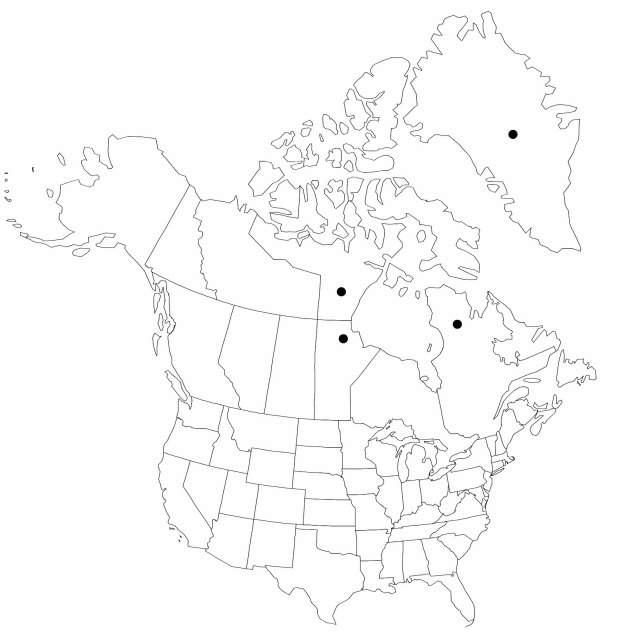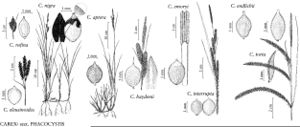Carex rufina
Naturhist. Tidsskr. 3: 446. 1841.
Plants cespitose. Culms obtusely angled, 4–15 cm, glabrous. Leaves: basal sheaths redbrown; sheaths of proximal leaves glabrous, fronts with redbrown spots, veinless, apex U-shaped; blades amphistomic, 1.5–2 mm wide, papillose on both surfaces. Inflorescences: proximal bract longer than inflorescence, 1–1.5 mm wide. Spikes erect, compact; proximal 2–3 spikes pistillate, 1–1.5 cm × 3 mm, base cuneate; terminal spike gynecandrous. Pistillate scales redbrown or black, shorter than perigynia, apex obtuse, awnless. Perigynia ascending, green (becoming white) with redbrown spots on apical 1/2, 3–5-veined on each face, stipitate, tightly enclosing achenes, thin-walled, ellipsoid, 2–2.2 × 1.2–1.5 mm, dull, base truncate, distended, apex obtuse or acute, papillose apically; stipe to 0.3 mm; beak redbrown, 0.2 mm. Achenes not constricted, dull, base adnate to perigynium. 2n = 86.
Phenology: Fruiting Aug–Sep.
Habitat: Wet sandy or gravelly shores
Elevation: 0–800 m
Distribution

Greenland, Man., Nunavut, Que., Europe (Denmark), Europe (Norway), Europe (Sweden)
Discussion
Although placed by K. K. Mackenzie (1931–1933, parts 2–3, pp. 231–231) in sect. Bicolores Tuckerman, Carex rufina is a member of the C. acuta complex, and appears to be very closely related to C. lenticularis. It differs from C. lenticularis in the red-brown spotted perigynia, black scales, and gynecandrous terminal spike.
Selected References
None.
Lower Taxa
"shortened" is not a number.
